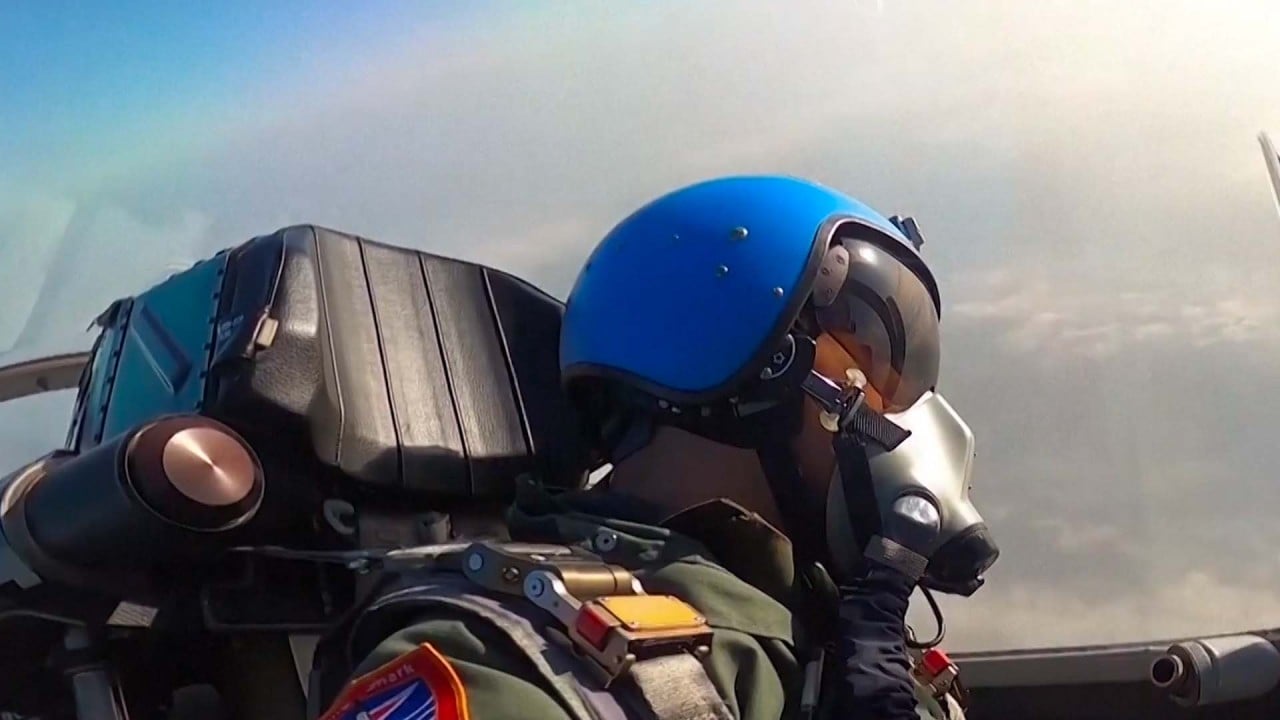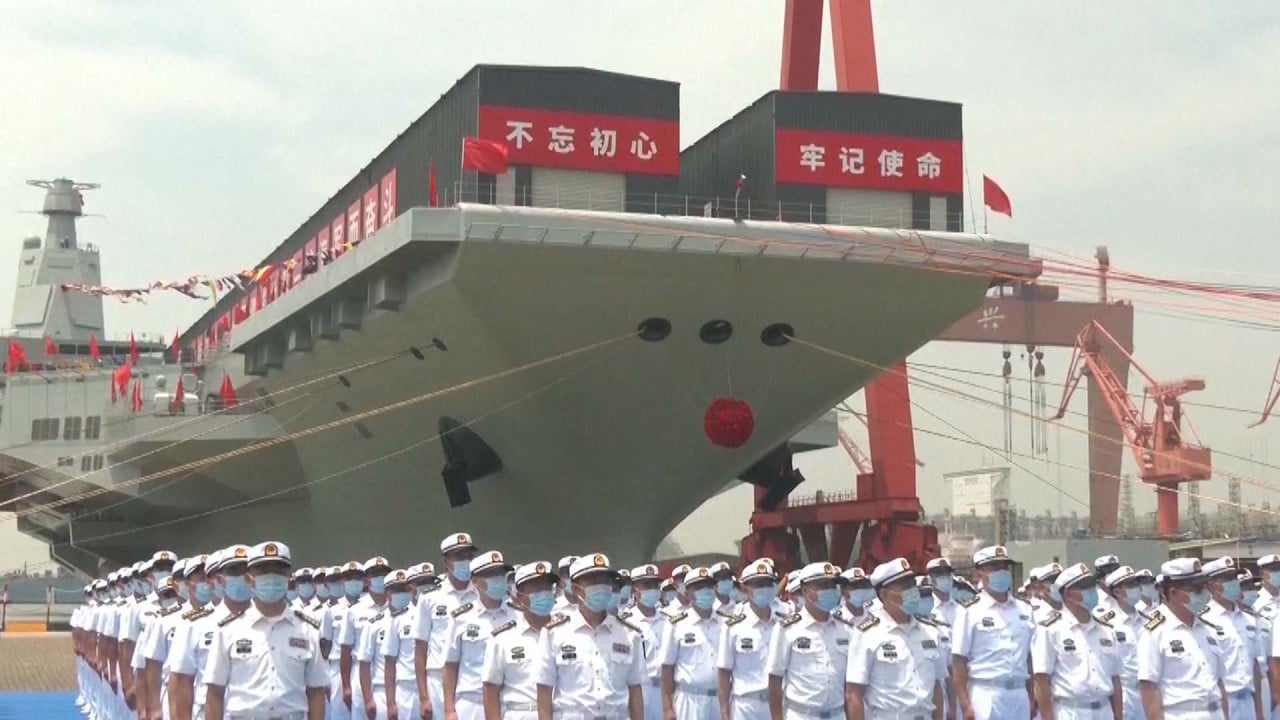
China’s jet fighter pilots elevated as aircraft carrier fleet grows
- The promotion of flying officers to command positions on board PLA Navy carriers mirrors US approach
- CCTV documentary also highlights another similarity, with the Chinese navy now training its own pilots
J-15 pilot Xu Ying performed the initial night landing on the deck of Liaoning – China’s first aircraft carrier – in 2017, and was promoted to executive officer (XO) of the Shandong – its first domestically built carrier – in 2020, after a year of warship combat and command training.
“As a user of ship-borne weapons, I would share my [naval flight experiences] with comrades working in the equipment department and try efforts to improve our operational system, finding a better way to help China’s aircraft carrier undertaking,” Xu told a documentary on CCTV.
Xu, now a naval commodore, continues to lead the J-15 Flying Shark aviation team in routine training, according to CCTV.
His appointment is just one example of the PLA Navy’s efforts to catch up with the US service, where almost all commanding and executive officers are drawn from the ranks of its fighter pilots.
Chinese navy struggles to find pilots for aircraft carriers
Previously, almost all the commanding officers on China’s first two carriers were former commanders of destroyers and frigates.
Zhou Chenming, a researcher with the Beijing-based Yuan Wang military and science technology think tank, welcomed the PLA Navy’s efforts to foster more of its flight officers into command positions of China’s aircraft carrier strike groups.
“The promotion of Xu is a good starting pilot project for the navy. An XO with naval flight background is very helpful to the giant aircraft platform’s overall coordination and routine operations,” he said.
Xu is not China’s first pilot to command a warship. That record was set in the early 1990s by Rear Admiral Bo Yaoping, the incumbent deputy commander of the North Sea Fleet, according to earlier state media reports.
Bo joined the air force in 1979 when he was 17 and could fly four types of fighter jets by the age of 25. In 1987, he was admitted to the Guangzhou Warship Academy and was given command of a frigate four years later.
The launch in June of China’s third and most advanced carrier, the Fujian, has increased the demand for more outstanding carrier-based pilots like Xu.
The new aircraft combat platform’s electromagnetic catapults – similar to those on the USS Gerald R. Ford supercarrier – means the PLA Navy will have to master a new launch and recovery system. Both the Liaoning and Shandong decks feature ski-jump designs.
China puts Fujian aircraft carrier systems to milestone test
In 2017, the PLA Navy established its own aviation training school – similar to the US Navy’s approach – rather than picking qualified candidates from the air force.
The CCTV documentary showed the effects of the change, which also gives the PLA Air Force more resources to focus on its own specialty – air combat training, attributing an innovative new approach developed after the restructure.
The air force pilots had come up with a cost-saving but highly efficient “high-low mix” in its training, by letting its most advanced J-20 stealth fighter jet integrate with the older and more cumbersome J-16 bombers and the J-10, CCTV said.
Fu Qianshao, a retired PLA Air Force equipment specialist, said the innovative air battle formation could be seen as another strategic lesson taken from the US, with the J-20 playing the role of the American F-22, and the J-16 and J-10C standing in as modified F-15EX and F-16V.
“Stealth fighter jets like the J-20 and F-22 are powerful, but they can’t carry too much weaponry. Heavy bombers like the J-16 or F-15EX could fix the problem, while light fighter jets like the F-16V and J-10C could provide protection,” Fu said.



